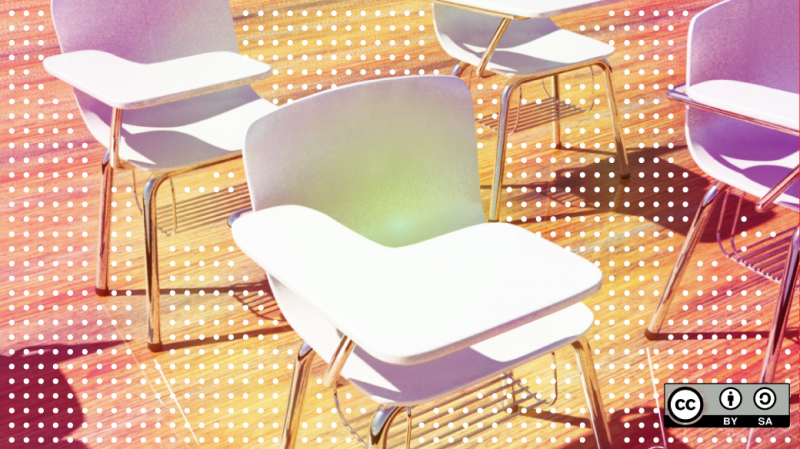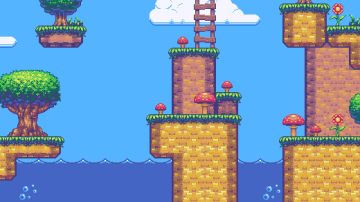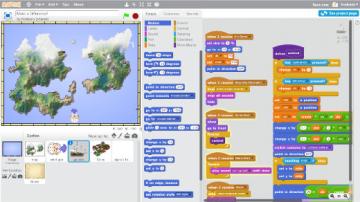"Hello, I'm Miss Jess, and my students taught me how to code."
When I say this to new students, they often think I misspoke. But it's true. Coding always interested me, but it seemed inaccessible. Then my students taught me to code a video game during a few lunch breaks.
Their encouraging advice and suggestions helped me create my first video game using Scratch. The game was simple. It was about a monkey catching bananas as they fell from the sky. If you caught a ripe banana, you earned points.
One of my students chimed in with an idea: "Why don't you have bad bananas that take away points?"
The answer was that I didn't know how to do that yet. But this simple idea was kind of like a puzzle to me. And there's nothing I love more than a good puzzle. So I spent a lunch break working at this new idea until I solved it.
An accidental side effect of this project was that I was strengthening my math skills. I'd made it through high school and university without ever really understanding what a variable was. But finally having a real-world application I cared about—needing a scoring system for my game—made it all make sense.

(Jess Weichler, CC BY-SA 4.0)
Connecting with kids through coding
Coding isn't just for kids who dream of becoming computer programmers. It's for everyone. Educators and parents can harness the power of code to engage learners and introduce subjects in a unique way.
Writing code and seeing it run is a process of discovery, and everyone loves feeling accomplishment. But once you know a little code, it doesn't take long for you to realize that programming can express ideas; foster creativity; teach mathematics, logic, and problem solving; and encourage collaboration. What's not to love?
Connecting with kids is always important in education, but with more kids learning from home this year, it's vitally important to engage with them. Coding is a great way to do that.
Teaching kids to code
My youngest students are 4 to 7 years old, and I start them with paper "code" activities. These are simple physical games that help young children understand basic programming concepts and mindsets without a digital device. Once my students turn 8, I introduce Scratch, a visual programming language that uses block-based code. I continue this track until they're age 10 to 12. I also teach some paper "code" activities with older children to introduce and reinforce concepts.
Once students have a clear understanding of visual coding, I move into text-based coding with Python. It's important to help students make the connection between new Python keywords and the Scratch blocks they already know. (Check out my introduction to Python series for more information.)
Just the beginning
Whether you're an educator, after-school provider, or parent, join me in a series of articles as I explore how you can use coding to supercharge learning opportunities for your child, your students, or even yourself.










4 Comments